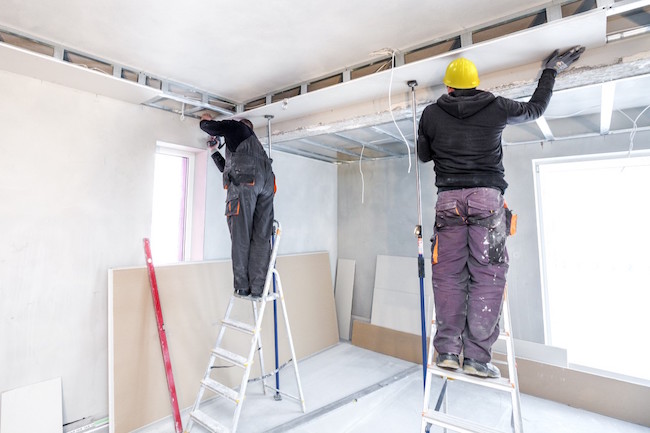
Ontario changes long term care building fund in bid to spur construction
By Shawn Jeffords, The Canadian Press
Construction
$1.75 billion in existing funding will pay for construction of new long-term care homes across the province. PHOTO: Adobe Stock/Dagmara_K
TORONTO—Ontario is changing the way it funds long-term care home expansions, Premier Doug Ford announced July 15, in a bid to spur construction and make good on a key promise his government has failed to deliver.
Speaking at the provincial legislature, Ford acknowledged that the COVID-19 pandemic has highlighted the shortcomings of the province’s long-term care system, including a severe bed shortage his government has repeatedly promised to address over the past two years.
“The last few months have made it crystal clear that when it comes to long-term care, we can’t accept the status quo,” Ford said.
“What we need is significant investment in the long-term care sector,” he said. “We need to tear down and redevelop old homes and we need to build new ones. We need thousands of new long-term care beds, and we need them fast.”
In 2018, Ford pledged to add 15,000 new long-term care beds to the system, along with renovating 15,000 existing beds over five years, at a cost of $1.75 billion.
On Wednesday, he conceded the same pocket of money will now pay for 8,000 beds, and 12,000 renovated beds in that period.
“These estimated 20,000 beds are the first step of a number of new initiatives we will be putting forward to meet our target.”
The new funding formula will pay builders more, and include grants to cover up to 17 per cent of up-front capital costs, in an effort to entice companies to build new homes.
The province also promised that all new long-term care facilities, and those being renovated, will have air conditioning.
Ontario’s long-term care homes have been hard hit by the COVID-19 pandemic with outbreaks killing more than 1,700 people and prompting the government to create a commission to investigate.
NDP Leader Andrea Horwath said the new funding formula change is another empty promise even as the serious shortage of long-term care beds drags on.
“The announcements get made, but the beds never get built,” she said.
Liberal Leader Stephen Del Duca said the Ford government has broken its promise on adding capacity to the long-term care system, and the announcement does nothing to address immediate concerns during the pandemic.
“Flu season and a potential second wave of COVID-19 are on the horizon, but Doug Ford has no plan to fix the ongoing crisis in long term care by fixing the staffing shortage,” he said in a statement.
The Progressive Conservatives said the creation of thousands of needed beds has been slow because the previous system was outdated and did not take regional needs into account.
The CEO of the Ontario Long Term Care Association said that group is committed to working with the government to expedite capital projects.
“The government’s increased level of capital funding will help a number of operators who were not able to previously secure financing to rebuild their homes,” Donna Duncan said in a statement.
The secretary-treasurer of the Canadian Union of Public Employees Ontario said the Ford government must expand beds only in non-profit homes and pause all for-profit expansion.
“No one should be making money from the care of the elderly and vulnerable in our residential homes,” Candace Rennick said in a statement.
Meanwhile, Long-term Care Minister Merrilee Fullerton said because COVID-19 cases in the province are dropping, the government will loosen rules that have restricted visits to long-term care homes.
Starting Wednesday, a person visiting a resident outside a home will no longer need to attest that they’ve taken a COVID-19 test within the previous two weeks.
Indoor visits, which are currently limited to essential workers and families of palliative patients, will be permitted as of July 22, with a two-person limit.
In those instances, visitors will still need to attest that they’ve had a COVID-19 test within the last two weeks and had a negative result.




